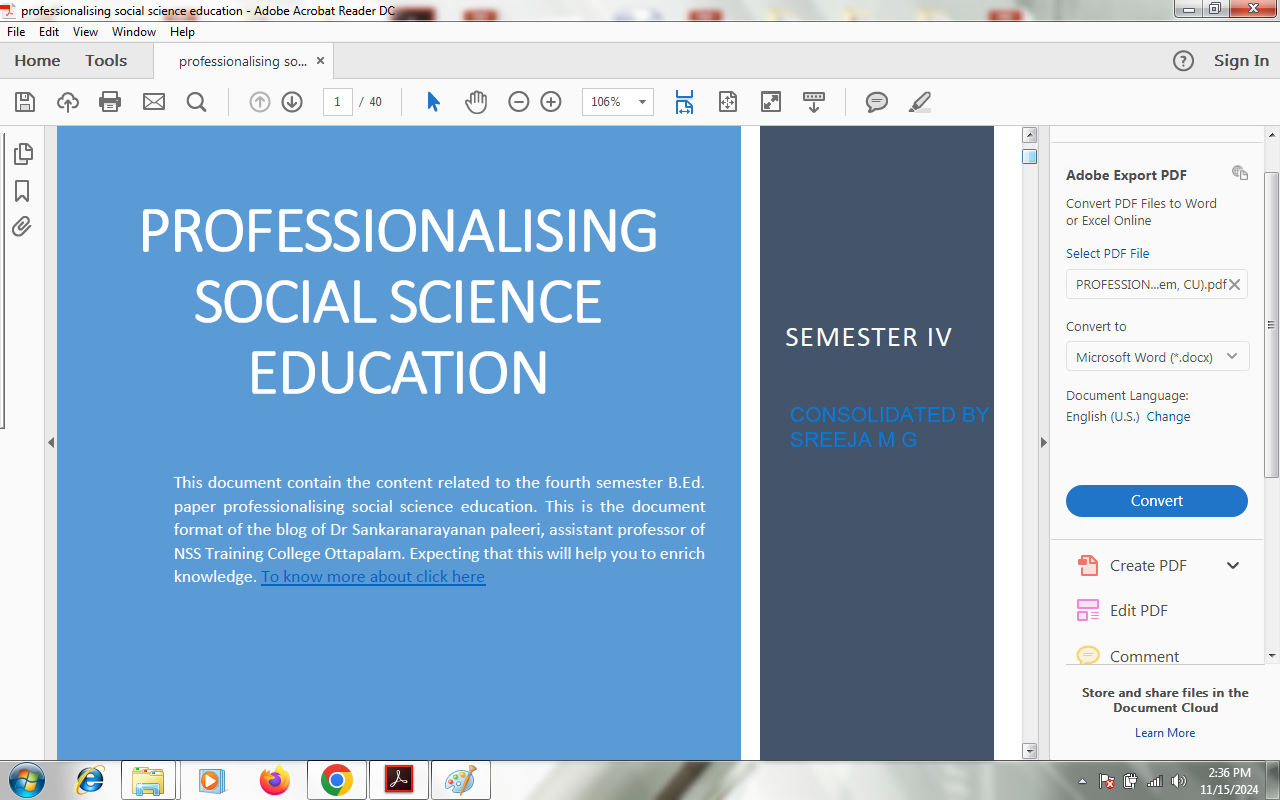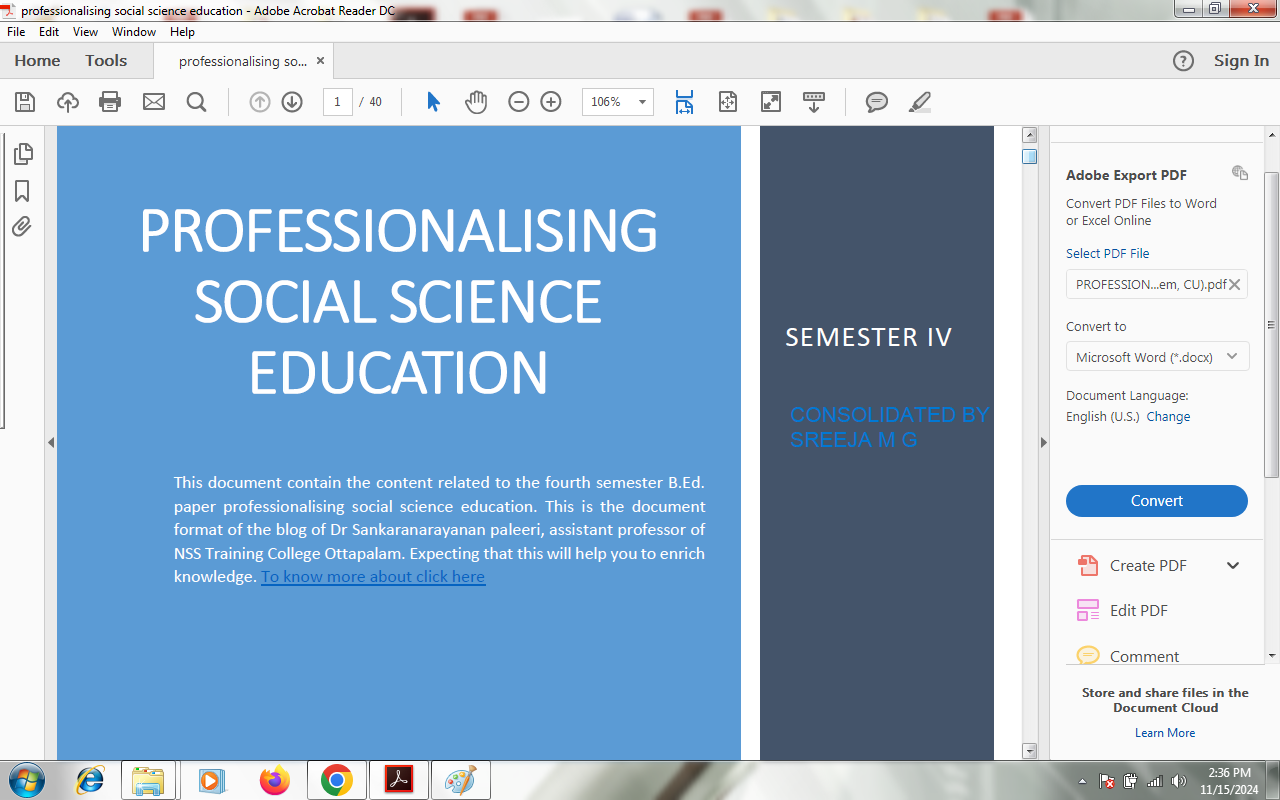Professionalizing Social Science Education
This is a brief note on the course Professionalizing Social Science Education that is a paper for IV semester B Ed program of University of Calicut.
The text is available on following link
Either copy this link to Google search
https://drive.google.com/file/d/1zT-ccyfZk17EXXxoDAMH9RwhPmcjq1pM/view?usp=sharing
or click on the following link
the text on professionalizing SS Education
TEACHING AS A PROFESSION Teaching is not a job, but a profession. A profession always needs completion of a professional education and training. Teachers all over the world enter this profession after the completion of a professional education. In India, teaching is something more than a profession. It is considered a sacred work. They are called preceptors or Gurus. Teaching is the specialized application of knowledge, skills and attributes designed to provide unique service to meet the educational needs of the individual and of society. The choice of learning activities whereby the goals of education are realized in the school is the responsibility of the teaching profession. Profession is derived from the word “profiteor” meaning to profess or to recognize or to own up or to agree or knowledge. The implication here is that a professional is a person who possesses knowledge of something and has a commitment to a particular set of values both of which are generally well accepted characteristics of professions. Teachers are professionals with knowledge and commitment. They possess a particular set of values and qualities. In its broadest sense, teaching is a process that facilitates learning. Teaching is the specialized application of knowledge, skills and attributes designed to provide unique service to meet the educational needs of the individual and of society. The choice of learning activities whereby the goals of education are realized in the school is the responsibility of the teaching profession. In addition to providing study......







